What Does Omarosa Know?
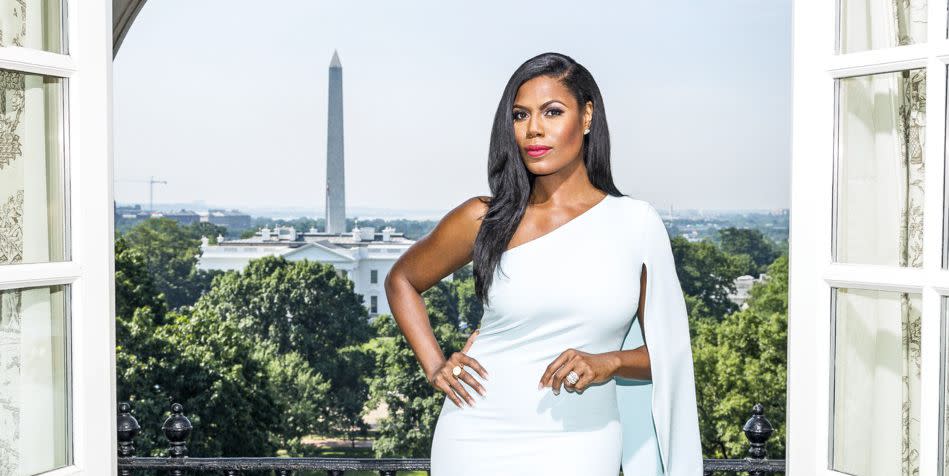
Seven hundred miles south of the White House, Omarosa Manigault Newman is in a soulless restaurant at Jacksonville International Airport, practicing her putting. It’s nearly 9 p.m., and most of the shops are now closed. But this golf-themed eatery is open; thank God, because it’s Omarosa’s favorite. The former White House aide and mononymous reality-TV villain is here four or five times a month, she tells me. It’s the best.
She picked up golf as a teenager, when her mom enrolled her in a program for inner-city kids. “Anything to get us out of the projects,” she recalls. She got hooked. In fact, two years ago she met her husband, Baptist pastor John Allen Newman, through their charity work at a nonprofit that teaches kids how to play. (They shared a car from another airport, Washington’s Reagan National, and ended up spending the day together.) Tonight, Newman is flying in from Detroit, where he was in...a golf tournament. She likes to pick him up at the airport whenever she can.
I explain that I’m not much of a golfer, and she takes it upon herself to teach me the basics. Clad in a paisley maxidress, hair tucked into a black Nike hat, she divulges her one and only tip: The ball needs to roll forward. “Most people don’t get that,” she says. Maybe, I suggest, we should sit down and get our interview started? She reluctantly puts down her putter and grabs a seat at the nearly empty bar. She orders steamed broccoli and coffee, because she’s training for a 5K and her trainer wouldn’t approve of the cheeseburgers and French dips on offer here. Also: “Nothing tastes better than skinny, honey.” It’s not easy being Omarosa. Which, by the way, is pronounced with a hard O, she clarifies. But “I think America has done pretty well with my name.”
By all the laws of fame and physics, no one should still remember it. In 2004, Omarosa became the breakout star of Donald Trump’s reality show The Apprentice, forging a reputation as the boardroom bad guy. After more than a decade in Trump’s orbit, the now 44-year-old joined his presidential campaign, then followed him to the White House, where he appointed her the director of communications for the Office of Public Liaison. Her tenure came to an end in December, when the White House announced she was leaving “to pursue other opportunities.” And yet she’s still here: In the months since, she’s returned to TV as a contestant on Celebrity Big Brother. In August, she’ll release what she says is a long-overdue tell-all about her friendship with Trump. “Oh, it’s time, honey,” she says. “It’s time.”
Omarosa has always had a knack for timing. For 14 years, she’s ridden Trump’s coattails from New York to Hollywood to Washington. “Our brands are intricately woven together,” she concedes. But now, for the first time, she’s betraying her mentor. “The person that I thought I knew is in fact not the person that I believed him to be,” she says. He’s something far more dangerous. “I have taken the Trump train as far as it can go,” she says. “This is now the Omarosa train.”
That train started in Youngstown, Ohio, where Omarosa grew up in “extreme poverty.” Her mom, Theresa Manigault, who introduces herself to me as “Momarosa,” pushed her to work hard, cementing a simple phrase in her head she can still repeat on command: “Good, better, best. Never let it rest. Till your good is your better and your better is your best.” Omarosa studied broadcast journalism at Central State, a historically black university outside Dayton, and got her master’s in telecommunication policy at Howard University, in DC. Years before her turn at the White House with Trump, she worked for the Clinton administration, doing logistics for the vice president and, later, personnel for the president’s office. According to People, at her last job in the administration, in the Department of Commerce, she “was asked to leave as quickly as possible, she was so disruptive. One woman wanted to slug her.” Omarosa calls that story “bizarre”-“They found the one person who I didn’t like, and she didn’t like me”-and adds, “I was young, ambitious, aggressive. I ruffled feathers, but I also got the job done.”
She’d finished all the coursework for her doctorate at Howard and was preparing to defend her dissertation and graduate when she was offered a spot on The Apprentice. “My life changed because of Donald Trump,” she says. Even after getting the ax, she joined Trump for two more seasons of the show, then nabbed her own series: Donald J. Trump Presents: The Ultimate Merger, a Bachelorette-style spin-off that chronicled her search for a soul mate who could, in Trump’s words, “tame” her. She also appeared on more than 30 other game, comedy, and talk shows. (“Look up my IMDb,” she implores when she tells me this. Then, a few hours later: “Did you look at my IMDb?”)
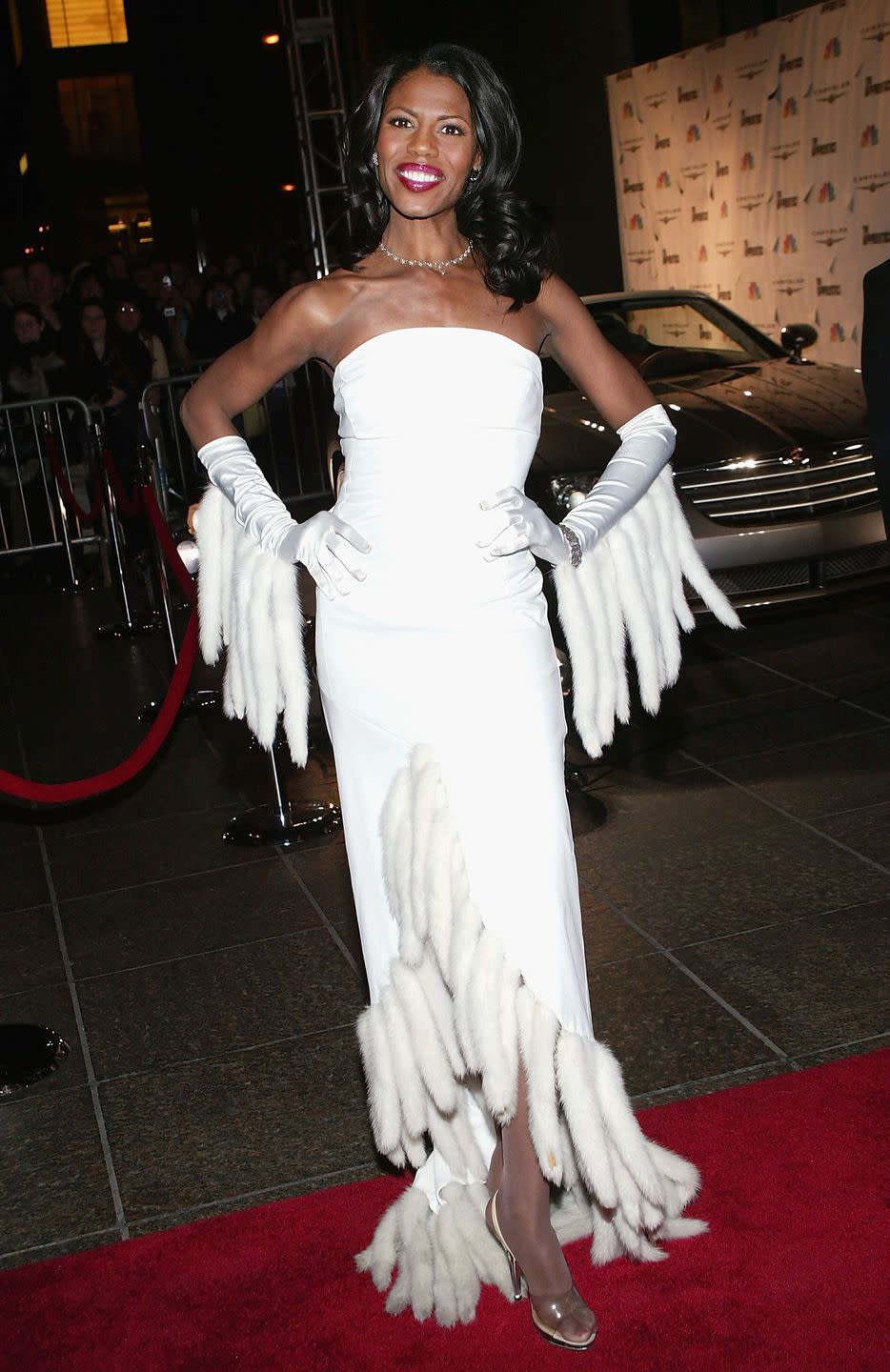
She found time to become ordained as a minister as well. While this came as a shock to people who only knew her nefarious on-screen persona, she says it wasn’t a surprise for those who knew her best; many of her relatives have been in the clergy. (When I ask her when she entered the seminary, she Googles herself to find a Hollywood Reporter article breaking the news: 2009.) In the run-up to the 2016 election, she initially supported Hillary Clinton, whom she described as “the most experienced, talented candidate in history.” But when Trump got in the race, she defected, joining his campaign as director of African American outreach. In the months before Election Day, when even Trump thought he would lose, she declared ominously-sounding more than a little authoritarian-that “every detractor will have to bow down to President Trump.”
It was a quintessential Omarosa move, says Jeff Johnson, a journalist who hosts BET’s Mancave and who met his wife after Omarosa set them up. She sized up the Clinton camp, he tells me, and saw a line of other black women in front of her: Donna Brazile, Leah D. Daughtry, Maya Harris. On the Trump side, in contrast, she stood apart. “O is one of the most calculated and strategic people I know,” Johnson says. “I think the Machiavellian Omarosa looked at, ‘I’ve supported the Clintons for years; I’ve supported Trump for years.’ ” Where could she be more powerful?
Omarosa explains it thusly: “The only thing that I gained through this journey are people who wonder, ‘How could you stand with a man who is so divisive, filled with so much hatred, creating so much chaos, and basically trying to destroy the republic as we know it?’ Where is that gain, aside from just standing and being loyal to a friend?”
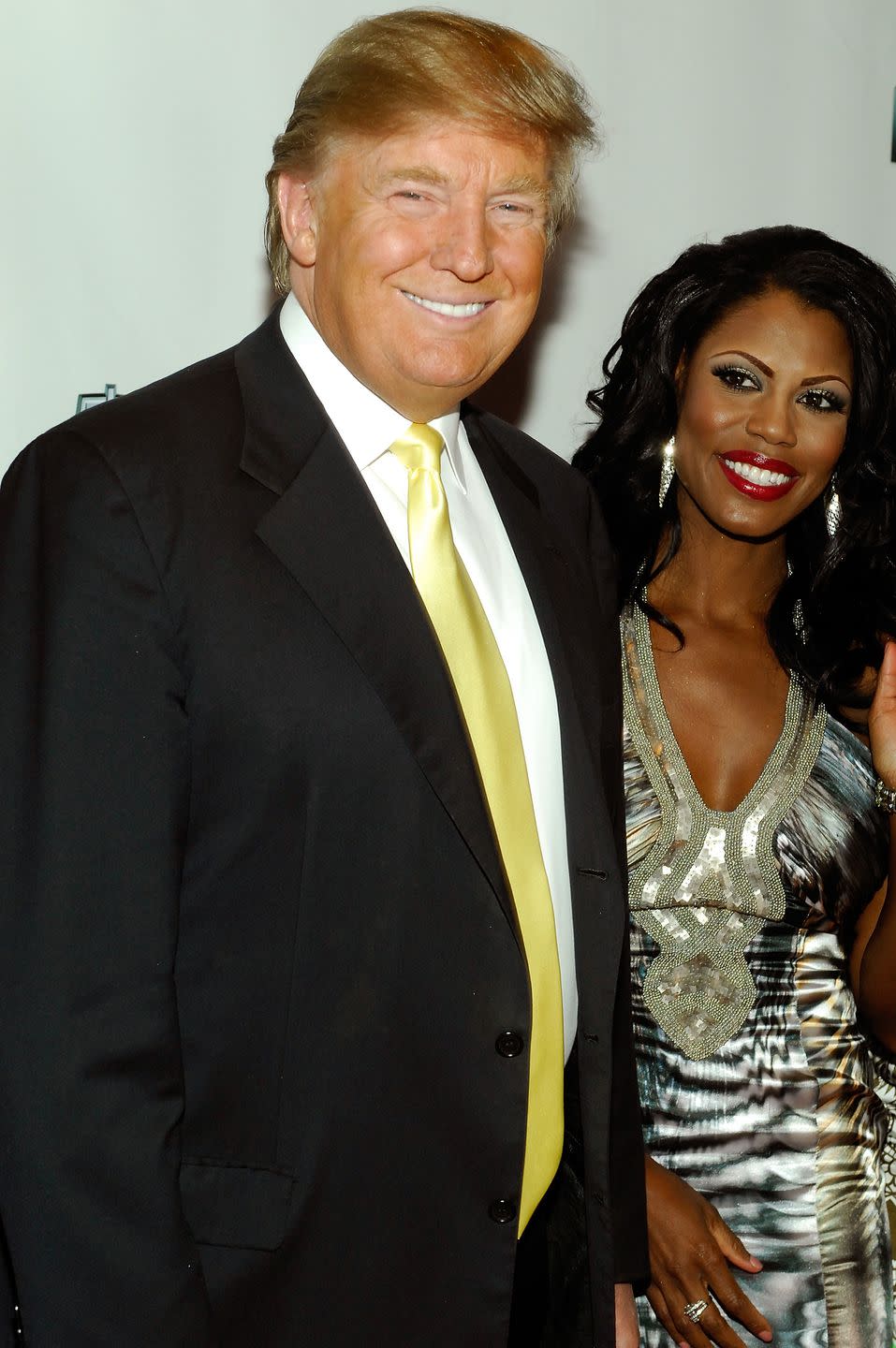
Trump, who values loyalty above nearly everything else, rewarded her with a plum White House job where she earned the highest allowable salary: $179,700 a year. The president gravitated toward her in the West Wing, she says, because she was a familiar face. “Donald could say, ‘Go call John about XYZ,’ and he wouldn’t have to say who that was, because I’ve been around Trumpworld for so long.” During one meeting, a man walked in who was the spitting image of a former Apprentice contestant. “I slid [the president] a note that said, ‘Doesn’t that guy look like Sam Solovey?’ Donald looks at the guy and starts cracking up. He’s like, ‘Oh my God! He looks like Sammy!’ ”
Administration officials complained that Omarosa was a constant source of distraction, such as when she traipsed through the West Wing with her 39-person bridal party for a reportedly unannounced photo shoot. She blanches at this characterization. “Have you seen the president? He doesn’t need a whole lot to distract him.” Her co-workers were simply envious of her relationship with Trump, she claims, and used her as a scapegoat for his minuscule attention span. “The truth of the matter is, people were very jealous.”
And yet, throughout my weekend in Jacksonville, it proves difficult for her to focus for any meaningful length of time. At one point during dinner at the airport, she ignores a question, electing instead to show me a highlight reel of White House photos on her phone. “There’s me on Air Force One!” She swipes. “Look, that’s me and Hope,” she says, pointing to Trump’s former communications director, Hope Hicks, who’s hunched over a desk in the photo. “Hopey!” I ask whom she was closest with at the White House. “Trump,” she says immediately. “Which was the problem for everybody.” She looks off into the distance of the empty airport for several seconds, then starts singing along to “My Girl,” which is playing in the background. “My husband loves this song,” she says.
At the request of her publisher, I am prohibited from reading her forthcoming book in its entirety before it has been properly vetted. In early July, shortly before ELLE’s press time, I am given access to certain portions. In the excerpts I read, she doesn’t hold back. She details how creepy Trump was with his daughter Ivanka, recounting a meeting in which he gushed about how great she looked in a fitted skirt. She reveals how a “select Trump campaign mailing list” received daily emails from a producer at Fox News that “summarized the news of the day, broke down talking points and spin suggestions, and offered resources.” She slams Secretary of Education Betsy DeVos as “woefully inadequate and not equipped for her job.... She does not care about your children. Be afraid. Be very, very afraid.”
But Omarosa saves her most searing criticism for Trump’s mental health. The title of her book, Unhinged, pretty much sums up her sentiments. “I do not believe that he has the mental capacity to lead this country,” she tells me. She pauses, and speaks the next words very slowly. “He is not well. The president is not well.”
During her time in the White House, she worked with different constituencies, ostensibly building support for the administration’s agenda. Because her portfolio included race relations, she was responsible for briefing Trump before events dealing with the black community-for instance, the opening of a new civil rights muse- um in Mississippi, or a breakfast to honor Black History Month. “I would go over the material with him. He would look me in my eyes and say, ‘Yeah, I got it. I got it,’ then walk out, not retain any of the information, and just start rambling about things that weren’t related to the event.” In June, Trump tweeted that he had never pushed Republicans to pass immigration legislation that ultimately failed. That statement contradicted his own tweet just days earlier that explicitly called for Republicans in the House to pass the “strong but fair” bill. “He honestly did not remember it because he’s not capable of remembering tweets-[he’s] suffering from some form of mental impairment that does not allow him to recall,” she says.
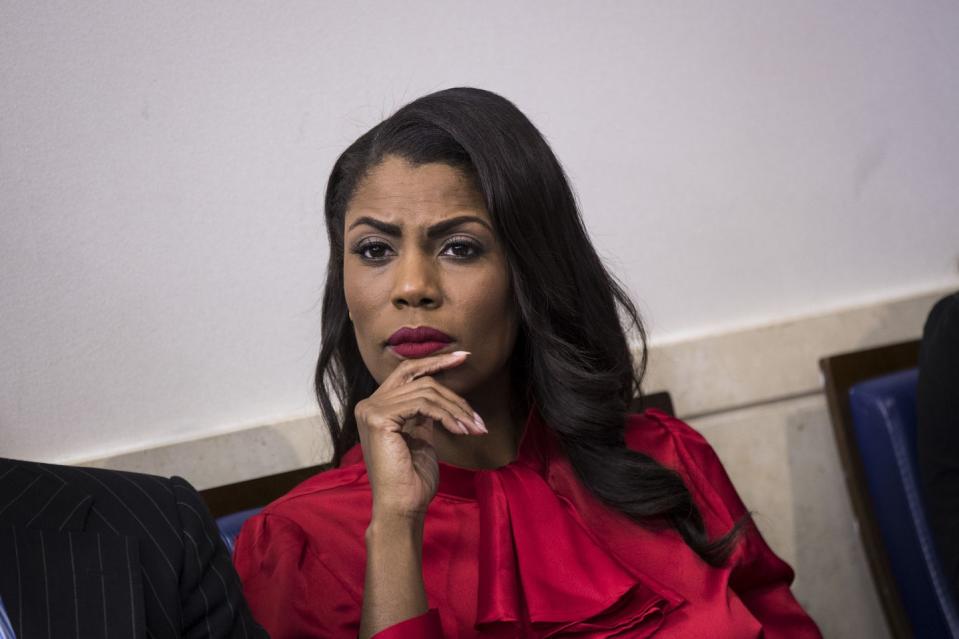
Over the last two years, she says she also realized something else about Trump. When he called Mexicans “rapists” or referred to Haiti as a “shithole country,” he wasn’t just being provocative, riling up his base, and securing wall-to-wall news coverage. It took her too long, maybe, to see her mentor for what he was. And what is that, exactly? She dances around it both in our conversations and in her West Wing anecdotes. I ask her point-blank: Do you think Trump is racist? “There’s no question about it,” she responds, without a moment’s hesitation.
Take his speech at the Republican National Convention in July 2016. “Although Trump said he wanted to improve the lives of all Americans,” she writes in the book, “he blamed our country’s problems completely and specifically on certain subsets of the population: black and brown people. It was hard to miss the racial undertones of his speech. When he railed against criminals, terrorists, and gangs, many figured he was not talking about white people. He said, ‘I am your voice.’ And by ‘your,’ he meant steelworkers and coal miners in the Rust Belt. It was classic dog-whistle racism.”
It was hard to miss-and yet somehow, she insists, she did. “I couldn’t have been able to see what I can see now,” she tells me. “It was a very slow, excruciating process to come to the point where I am today.”
Within the first week of the nascent administration, Omarosa says she saw cause for alarm. Trump’s travel ban, which initially blocked U.S. entry for people from seven Muslim-majority nations, was “troubling and disconcerting.” She told the president and senior staff that she viewed it as an attack on people of color. “This policy was intended to inflict pain, fear, and alarm on the world.”
But, I remind her, he first proposed this during the campaign in 2015. Did she not take issue with it then? “He said a lot of things on the campaign that were hyperbolic,” she says. “Politicians say a lot of far-reaching things that may or may not ever be implemented.”
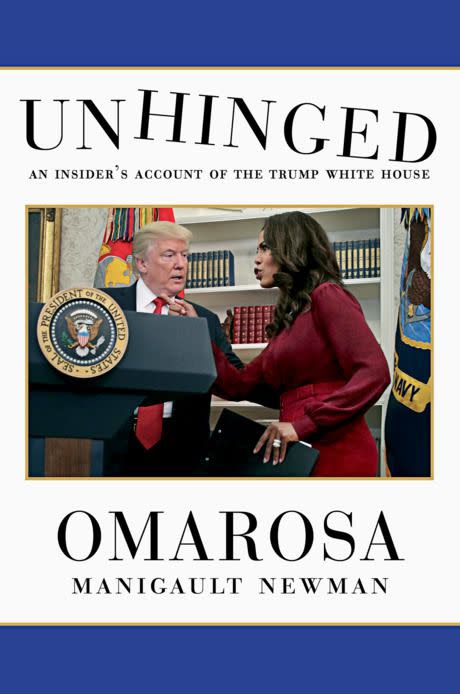
As Trump’s most high-profile black aide, she tried to position herself in the White House as an advocate for the African American community. But critics believed she was only there to provide him cover. “Look at my career, the wealth and exposure that I’ve had,” Omarosa wrote in a 2016 op-ed in the Hollywood Reporter, defending her boss. “It’s very difficult to make the argument that Donald Trump doesn’t like black people.
She says that her detractors didn’t see how hard she was working for people of color behind the scenes. “While I was fighting for increased funding for housing, policing, after-school programs, and educational programs that would benefit the African American community,” she says, “there were members of the community who were saying, ‘We don’t want you there; get out of there. We don’t want you at the table.’ ”
That balancing act was never more difficult than on the day of the white supremacist rally in Charlottesville, Virginia, last August. When she saw it on TV-hordes of men with tiki torches giving the Nazi salute-she says she immediately called senior staffers to devise a plan for the federal government to intervene. But when they brought it to the president, he balked. “Donald decides to stand down, and he doesn’t want to own it,” she recalls. “He thinks it’s the Democratic governor of a state that went blue, and he’s going to let them handle it.” Heather Heyer, the woman who was killed when a car plowed into protesters at the rally, “probably would have been spared,” she says, “had we acted.”
Trump was scheduled to make an infrastructure announcement a few days later. Omarosa says she wanted to cancel it and instead have a day of prayer, where the president could make a profound, unifying speech. Instead, in a rambling appearance at Trump Tower, he went off the rails, blaming “both sides”-the neo-Nazis and their opposing protesters-for the violence.
“I was so upset after those comments,” she tells me. “It was then that I decided, ‘Okay, I’m going to tender my resignation.’ ” She told her friend Armstrong Williams, a black political commentator, who reminded her that she was the only top-level African American adviser in the White House. “You can quit,” he told her. “Nobody would fault you for leaving. But then what?” Now that she’s gone, she says, “there’s no one to advocate, to call into question things that are being done.” Even if Omarosa spoke out privately, says Leah Wright Rigueur, an assistant professor of public policy at Harvard who studies black women in Republican politics, her public silence was deafening. “In times of moral crisis, when the president was actively doing harm, she said nothing,” she says. “On top of that, there were no results.”
Omarosa’s support for Trump has made her an anomaly at her church in Jacksonville, which she started attending when she met her husband and where, according to one member, “99 percent” of the congregation are Democrats. That includes her husband, the pastor, who campaigned for Hillary Clinton. After he delivers his sermon on the weekend of my visit, we talk briefly in his office. Omarosa sits in a chair in the corner. “There are some things that as a Democrat...cause me some concern,” Newman says carefully of Trump. “That’s not rocket science.” Anything specific?
Omarosa shoots him a look. “We’ve gotta go,” she says. He waves her off and looks back at me. “Sorry?” I start to repeat my question, but Omarosa cuts me off. “Babe, don’t get into it,” she says. “We’ve gotta go.” Newman doesn’t move. They share an excruciatingly long staredown before he says resignedly, “I mean, it’ll all be in the book anyway.” Despite their political differences, Newman was initially drawn to Omarosa because she’s “very genuine.” A couple of years ago, a member of his congregation had a death in the family. The funeral was being held in Baltimore, and a terrible snowstorm hit. He thought he’d be stranded there if he flew up from Florida. Omarosa, however, was much closer in New York. “She drove to be with that family just to say, ‘My husband can’t be here, but I want to be here with you.’ ”
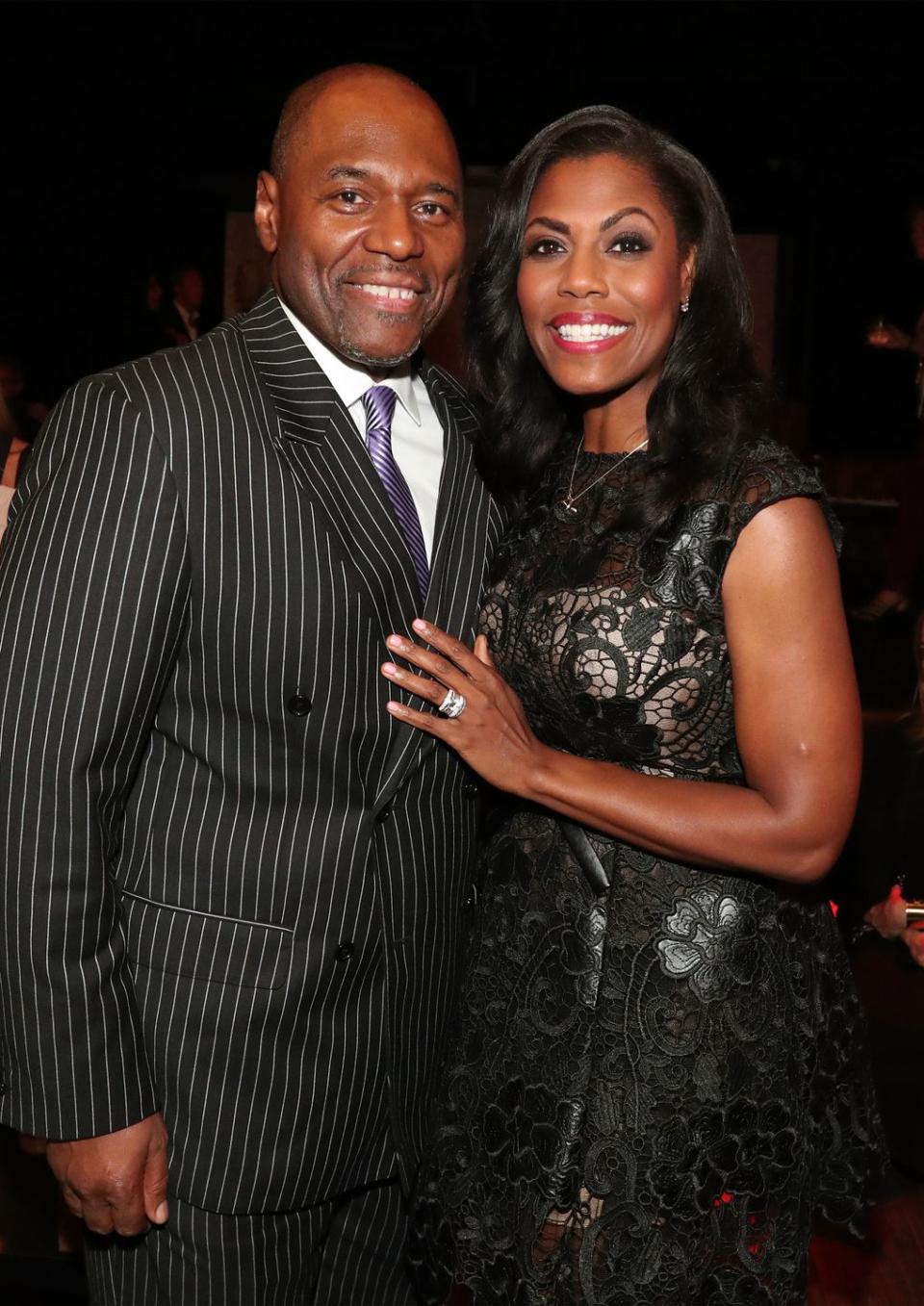
Johnson, the BET host, calls Omarosa “one of the most giving people I’ve ever met.” On mission trips, like one they shared in Gambia, she packs her suitcase full of clothes, toys, and books to bring to orphanages. “There’s this side of her that is humanitarian,” he tells me. “And then there is this side of her that is unbelievably power hungry and imperialistic. I don’t really know even as somebody who knows her, how the two battle internally.”
One day in December, she writes in her book, Chief of Staff John Kelly called her into the Situation Room. He told her she had “significant integrity issues” related to her alleged abuse of the White House car service. She maintains that this wasn’t the case and that Kelly was simply looking for an excuse to fire her. The real reason, she’s sure, was her dogged pursuit of what she calls “the n-word tape”: an elusive purported recording of Trump using the slur from his days on The Apprentice. Rumors have swirled about the tape since the campaign, but it has never surfaced. She needed to get her hands on it to know if he’d actually said it. “I would look like the biggest imbecile alive for supporting a man who used that word,” she writes. “And if he’d used it about me, the betrayal would be devastating.”
She agreed to an outwardly amicable departure, with Press Secretary Sarah Huckabee Sanders releasing a statement that Omarosa would resign to explore other ventures. But administration officials have since told Politico and other outlets that Kelly actually fired her because of her disruptive nature. One account claimed that she made a scene at the White House Christmas party and stormed the residence to beg Trump to get her job back. After she told a housemate on Celebrity Big Brother earlier this year that the U.S. is “going to not be okay” under Trump, the White House changed its public story as well: “Omarosa was fired three times on The Apprentice,” Deputy Press Secretary Raj Shah said in February, “and this was the fourth time we let her go.”
The most heated Omarosa gets is when she talks about the circumstances surrounding her White House departure. “To contradict yourself from that sacred podium-they should be embarrassed,” she rages. “Only after I went on Celebrity Big Brother and said something bad about Trump did they do that.”
Given that high-profile vengeance, I ask her how she’s steeling herself for the torrent her book will no doubt unleash. But mocking Trump’s “chaotic” administration and declaring him “mentally impaired,” she claims, doesn’t constitute backstabbing. “What if he’s happy with it?” she asks me. “He could love it.”
Throughout our time together, it’s difficult for me to discern whether she’s telling me what she actually believes or simply giving me sound bites she knows will make headlines. She spent 14 years on Trump’s reality show, and the key to ratings, she knows, is drama. Now that she’s off the set, her only currency is the salacious gossip from behind the scenes. It doesn’t matter that she’s burning Trump: This is now the Omarosa spin-off. “Expect to see me on the forefront of fighting for what’s right in this country, for being able to help right the wrongs that have happened in the last two years,” she says of her plans for after the book’s release. “I will be very active during this midterm and, particularly, during the next presidential election.” (No, she does not think Trump should get another term.)
How active exactly?
“I have some surprises that I just don’t want to reveal right now,” she tells me with a coy laugh. “You’ll have to wait and see.”
The question is, will anyone tune in?
This article originally appeared in the September 2018 issue of ELLE.
('You Might Also Like',)

